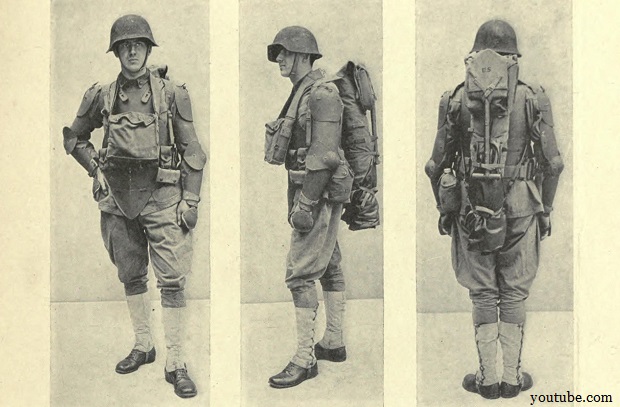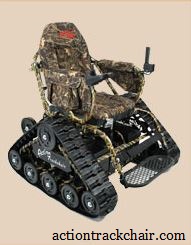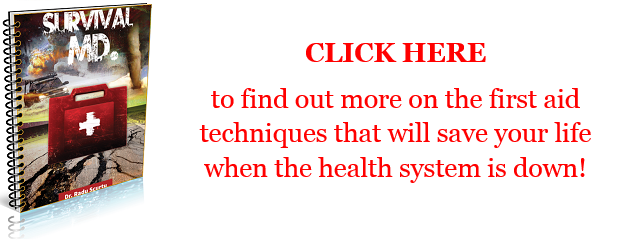We’re living uncertain times, when everybody needs to feel safe and protected. Under the circumstances, owning body armor comes with many benefits for civilians.
However, before you buy any particular type of body armor in the USA, you should understand the existing laws and regulations. It’s mostly legal to wear body armor for civilians across the United States but there are some states with certain restrictions.
Keep reading to find out what they are!
All civilians in the US have a right to protect themselves and their families but certain restrictions apply. For example, if you’ve been convicted of a felony, then you surrender their right to own body armor, since the US has a federal ban on the possession of body armor by convicted felons (18 U.S.C. 931).
But if you have written permission by an employer stating that you need if for your work, then you may purchase body armor.
One more thing to keep in mind about owning this item: retailers and distributors are not liable for what happens to body armor after it is sold.
Regulations by State
Let’s see what laws apply regarding this kind of ownership in every state:
Alabama
Alabama does not have any additional body armor laws. In Alabama, any civilian can purchase and use a bulletproof vest, unless he or she has been convicted of a felony. Bulletproof vests and all other body armor can be purchased online or in person.
Alaska
In Alaska, civilians can purchase and use a bulletproof vest, unless he or she has been convicted of a felony. Bulletproof vests and all other body armor can be purchased online or face-to-face.
Arizona
Like many states, Arizona has a law in place that makes it illegal to wear body armor during the commission of a crime. This does not affect body armor retailers.
Arkansas
In Arkansas, it is a Class A Misdemeanor to possess body armor if you have been convicted of murder, manslaughter, aggravated robbery, assault, or battery, and this law does not affect body armor retailers.
In any other case, civilians can purchase and use a bulletproof vest, unless he or she has been convicted of a felony. Bulletproof vests and all other body armor can be purchased online or face-to-face.
California
In California, civilians can purchase and use a bulletproof vest, unless he or she has been convicted of a felony. Bulletproof vests and all other body armor can be purchased online or face-to-face.

Colorado
In Colorado, anyone can purchase and use a bulletproof vest, unless he or she has been convicted of a felony. Bulletproof vests and all other body armor can be purchased online or face-to-face.
Connecticut
Of all the states, Connecticut has the toughest law on body armor, prohibiting residents from buying or selling body armor except through a face-to-face sale. Online retailers cannot market and sell to Connecticut residents.
In Connecticut, it is a class B misdemeanor, punishable by imprisonment for up to six months, a fine of up to $1,000, or both, to sell or deliver body armor unless the transferee meets in person with the transferor to accomplish the sale or delivery.
The law exempts sales or deliveries to:
- authorized officials or sworn members of local police departments, the State Police, the Division of Criminal Justice, the Department of Correction, or the Board or Pardons or Parole;
- authorized municipal or Department of Administrative Services’ officials who buy body armor for the above agencies;
- authorized Judicial Branch officials who buy body armor for probation officers; and
- members of the National Guard or armed forces (CGS § 53-341b).
Delaware
Delaware has a law in place that makes it illegal to wear body armor during the commission of a crime. This does not affect body armor retailers.
Florida
Florida has a law in place that makes it illegal to wear body armor during the commission of a crime, and, and this does not affect body armor retailers.
In Florida, any civilian can purchase and use a bulletproof vest, unless that adult has been convicted of a felony. Bulletproof vests and all other body armor can be purchased online or face-to-face.
Georgia
Georgia has a law in place that makes it illegal to wear body armor during the commission of a violent crime, or while trafficking drugs. This does not affect body armor retailers.
In Georgia, civilians can purchase and use a bulletproof vest, unless that adult has been convicted of a felony. Bulletproof vests and all other body armor can be purchased online or face-to-face.
Hawaii
In Hawaii, all civilians can purchase and use a bulletproof vest, unless they have been convicted of a felony. Bulletproof vests and all other body armor can be purchased online or face-to-face.
Idaho
In Idaho, anyone can purchase and use a bulletproof vest, unless he or she has been convicted of a felony. Bulletproof vests and all other body armor can be purchased online or face-to-face.
Illinois
Illinois does not have any additional body armor laws pertaining to retailers. In Illinois, any civilian can purchase and use a bulletproof vest, unless that adult has been convicted of a felony. Bulletproof vests and all other body armor can be purchased online or face-to-face.
However, it is illegal to for individuals to wear body armor while in possession of a dangerous weapon, other than a firearm, during the commission or attempted commission of any offense. Unlawful use of body armor is a Class A misdemeanor.
Indiana
In Indiana, any civilian can purchase and use a bulletproof vest, unless that adult has been convicted of a felony. Bulletproof vests and all other body armor can be purchased online or in person.
A person who knowingly or intentionally uses body armor while committing a felony commits unlawful use of body armor, a Class D felony (up until July 2014, when a new law takes effect). The new law states that a person who knowingly or intentionally uses body armor while committing a felony commits unlawful use of body armor, a Level 6 felony. Again, this law effects criminals, not retailers.
Iowa
In Iowa, any civilian can purchase and use a bulletproof vest, unless he or she has been convicted of a felony. Bulletproof vests and all other body armor can be purchased online or face-to-face.
Kansas
In the city of Topeka, Kansas, it is illegal to possess, carry or wear a bulletproof vest during protests, parades, rallies, assemblies and demonstrations. This statute does not affect retailers.
In Kansas, civilians can purchase and use a bulletproof vest, unless he or she has been convicted of a felony. Bulletproof vests and all other body armor can be purchased online or in person.
Kentucky
In Kentucky, any civilian can purchase and use a bulletproof vest, unless that adult has been convicted of a felony. Bulletproof vests and all other body armor can be purchased online or face-to-face.
Louisiana
Louisiana has a law in place that makes it illegal to wear body armor during the commission of a crime or on school property. This does not affect body armor retailers. In Louisiana, any adult can purchase and use a bulletproof vest, unless that adult has been convicted of a felony. Bulletproof vests and all other body armor can be purchased online or face-to-face.
Maine
In Maine, anyone can purchase and use a bulletproof vest, unless they have have been convicted of a felony. Bulletproof vests and all other body armor can be purchased online or face-to-face.
Maryland
Maryland law mandates that all civilians with a prior conviction for a crime of violence, or a drug trafficking crime, are prohibited from using, possessing, or purchasing bulletproof body armor without a permit issued by the Secretary of the Maryland State Police.
A civilian with a prior conviction for a crime of violence or a drug trafficking crime may file, for good cause shown, a petition with the Secretary for a permit to use, possess, and purchase bulletproof body armor.
Massachusetts
Massachusetts has a law in place that makes it a felony to wear body armor during the commission of a crime. In Massachusetts, anyone can purchase and use a bulletproof vest, unless they have been convicted of a felony. Bulletproof vests and all other body armor can be purchased online or face-to-face.
Michigan
In Michigan, any civilian of age can purchase and use a bulletproof vest, unless that civilian has been convicted of a felony. Bulletproof vests and all other body armor can be purchased online or face-to-face.
In Michigan, an individual who commits or attempts to commit a crime that involves a violent act or a threat of a violent act against another person while wearing body armor is guilty of a felony, punishable by imprisonment for not more than 4 years, or a fine of not more than $2,000.00, or both. This is not applying to state officers and security officers performing their duties while on or off a scheduled work shift.
Minnesota
In Minnesota, anyone can purchase and use a bulletproof vest, unless he or she has been convicted of a felony. Bulletproof vests and all other body armor can be purchased online or face-to-face.
Mississippi
In Mississippi, any civilian can purchase and use a bulletproof vest, unless that adult has been convicted of a felony. Bulletproof vests and all other body armor can be purchased online or face-to-face.
Missouri
In Missouri, any civilian can purchase and use a bulletproof vest, unless he or she has been convicted of a felony. Bulletproof vests and all other body armor can be purchased online or face-to-face.
Montana
In Montana, anyone can purchase and use a bulletproof vest, unless he or she has been convicted of a felony. Bulletproof vests and all other body armor can be purchased online or face-to-face.
Nebraska
In Nebraska, anyone can purchase and use a bulletproof vest, unless he or she has been convicted of a felony. Bulletproof vests and all other body armor can be purchased online or face-to-face.
Nevada
In Nevada, anyone can purchase and use a bulletproof vest, unless he or she has been convicted of a felony. Bulletproof vests and all other body armor can be purchased online or face-to-face.
New Hampshire
New Hampshire has laws in place that make committing a crime while wearing a bulletproof vest a felony, but does not have laws in place that prohibit sales of bulletproof vests by retailers.
A person is guilty of a class B felony if he commits or attempts to commit any felony while using or wearing body armor.
New Jersey
In New Jersey, any civilian can purchase and use a bulletproof vest, unless they have been convicted of a felony. Bulletproof vests and all other body armor can be purchased online or face-to-face.
Additionally, in New Jersey, a civilian can be charged separately for wearing a bullet proof vest while carrying out criminal acts. The practical effect is more jail time and fines. Separate penalties have a wide range depending on the seriousness of the underlying crime.

Experimental body armor from World War I
New Mexico
In New Mexico, anyone can purchase and use a bulletproof vest, unless he or she has been convicted of a felony. Bulletproof vests and all other body armor can be purchased online or face-to-face.
New York
In New York, any civilian can purchase and use a bulletproof vest, unless that adult has been convicted of a felony. Bulletproof vests and all other body armor can be purchased online or face-to-face.
A civilian is guilty of the unlawful wearing of a body vest when acting either alone or with one or more other persons he commits violent felony offenses while possessing a firearm, rifle or shotgun and in the course of and in furtherance of such crime he wears a body vest. The unlawful wearing of a vest is a class E felony.
North Carolina
North Carolina has a law in place that makes it illegal to wear body armor during the commission of a crime. This does not affect body armor retailers. In North Carolina, any civilian can purchase and use a bulletproof vest, unless that adult has been convicted of a felony. Bulletproof vests and all other body armor can be purchased online or face-to-face.
North Dakota
In North Dakota, anyone can purchase and use a bulletproof vest, unless he or she has been convicted of a felony. Bulletproof vests and all other body armor can be purchased online or face-to-face.
Ohio
Ohio does not have any additional body armor laws. In Ohio, any civilian can purchase and use a bulletproof vest, unless that adult has been convicted of a felony. Bulletproof vests and all other body armor can be purchased online or face-to-face.
Oklahoma
Oklahoma has a law in place that makes it a felony to wear body armor during the commission of a crime. This does not affect body armor retailers. In Oklahoma, anyone can purchase and use a bulletproof vest, unless he or she has been convicted of a felony. Bulletproof vests and all other body armor can be purchased online or face-to-face.
Oregon
In Oregon, anyone can purchase and use a bulletproof vest, unless he or she has been convicted of a felony. Bulletproof vests and all other body armor can be purchased online or face-to-face.
Pennsylvania
Pennsylvania does not have any additional body armor laws. In Pennsylvania, any civilian can purchase and use a bulletproof vest, unless that adult has been convicted of a felony. Bulletproof vests and all other body armor can be purchased online or face-to-face.
Rhode Island
In Rhode Island, any civilian can purchase and use a bulletproof vest, unless that adult has been convicted of a felony. Bulletproof vests and all other body armor can be purchased online or face-to-face.
In 2012, Rhode Island’s General Assembly passed a bill that forbids anyone convicted of a felony that is a crime of violence from buying or possessing body armor. This does not affect retailers of bullet proof vests.
South Carolina
South Carolina has a law in place that makes it illegal to wear body armor during the commission of a crime. This does not affect body armor retailers. In South Carolina, any civilian can purchase and use a bulletproof vest, unless that adult has been convicted of a felony. Bulletproof vests and all other body armor can be purchased online or face-to-face.
South Dakota
In South Dakota, anyone can purchase and use a bulletproof vest, unless he or she has been convicted of a felony. Bulletproof vests and all other body armor can be purchased online or face-to-face.
Tennessee
Tennessee has a law in place that makes it illegal to wear body armor during the commission of a crime. The unlawful wearing of a vest is a Class E felony. This does not affect body armor retailers. In Tennessee, any civilian can purchase and use a bulletproof vest, unless that adult has been convicted of a felony. Bulletproof vests and all other body armor can be purchased online or face-to-face.
Texas
In Texas, anyone can purchase and use a bulletproof vest, unless he or she has been convicted of a felony. Bulletproof vests and all other body armor can be purchased online or face-to-face.
Utah
In Utah, anyone can purchase and use a bulletproof vest, unless he or she has been convicted of a felony. Bulletproof vests and all other body armor can be purchased online or face-to-face.
Vermont
Vermont does not have any additional body armor laws. In Vermont, any civilian can purchase and use a bulletproof vest, unless that adult has been convicted of a felony. Bulletproof vests and all other body armor can be purchased online or face-to-face.
Virginia
Virginia has one additional body armor law, like many states: Any person who, while committing a crime of violence or a felony violation, has in his possession a firearm or knife and is wearing body armor designed to diminish the effect of the impact of a bullet or projectile, shall be guilty of a Class 4 felony. This law does not affect retailers.
In Virginia, any civilian can purchase and use a bulletproof vest, unless that adult has been convicted of a felony. Bulletproof vests and all other body armor can be purchased online or face-to-face.
Washington State
In Washington, anyone can purchase and use a bulletproof vest, unless he or she has been convicted of a felony. Bulletproof vests and all other body armor can be purchased online or face-to-face.
West Virginia
In West Virginia, a civilian who wears or is otherwise equipped with body armor while committing a felony offense, an element of which is force, the threat of force, physical harm to another or the use or presentment of a firearm or other deadly weapon, is guilty of a felony. This does not affect body armor retailers.
In West Virginia, any civilian can purchase and use a bulletproof vest, unless that adult has been convicted of a felony. Bulletproof vests and all other body armor can be purchased online or face-to-face.
Wisconsin
In Wisconsin, any civilian can purchase and use a bulletproof vest, unless that adult has been convicted of a felony. Bulletproof vests and all other body armor can be purchased online or face-to-face.
In Wisconsin, donning a bulletproof vest during a felony or attempted felony can lead to an additional felony conviction, or the adding of extra years to the final prison sentence. This law affects certain individuals who might wear bulletproof vests, but does not affect retailers.
Wyoming
In Wyoming, anyone can purchase and use a bulletproof vest, unless he or she has been convicted of a felony. Bulletproof vests and all other body armor can be purchased online or face-to-face.
Where to Buy Body Armors From
Body armors can be sold to any person in a face-to-face transaction. No ID or background check is required and no special record keeping is needed.
Body armor can also be shipped to 49 states, while sales to customers in Connecticut can only be done via face-to-face transaction, since they cannot be sold via the post.
If you are interested to have a body armor, you can find it and buy it via a store, gun show, website, via the phone or catalog. But you cannot ship, take, bring, or send body armor outside the USA without Federal permission.
Whatever you choose, choose wisely and be aware what using this item means for you and your family protection!

This article has been written for Survivopedia by Thomas Bowman from SafeGuard.
from Survivopedia
Don't forget to visit the store and pick up some gear at
The COR Outfitters. How prepared are you for emergencies?
#SurvivalFirestarter #SurvivalBugOutBackpack #PrepperSurvivalPack #SHTFGear #SHTFBag





















 More people are becoming wheelchair bound because of other medical conditions that don’t necessarily have to do with a physical injury. And if you have suffered a major illness or have undergone a surgery followed by a complex recovery period, you might also need a wheelchair temporarily.
More people are becoming wheelchair bound because of other medical conditions that don’t necessarily have to do with a physical injury. And if you have suffered a major illness or have undergone a surgery followed by a complex recovery period, you might also need a wheelchair temporarily.
 A hotly-debated study led by Professor Gerardo Ceballos at the Universidad Nacional Autonoma de Mexicowarns that the human population explosion is leading to the widespread contamination and destruction of the planet, ultimately collapsing life support systems upon which human civilization depends. As reported by
A hotly-debated study led by Professor Gerardo Ceballos at the Universidad Nacional Autonoma de Mexicowarns that the human population explosion is leading to the widespread contamination and destruction of the planet, ultimately collapsing life support systems upon which human civilization depends. As reported by 















